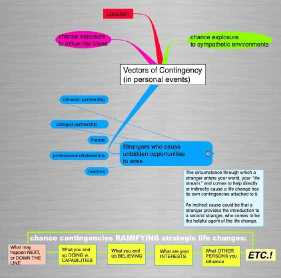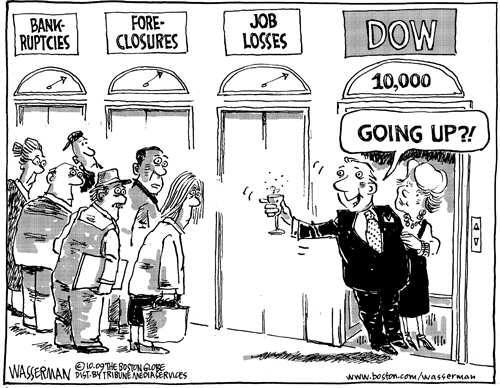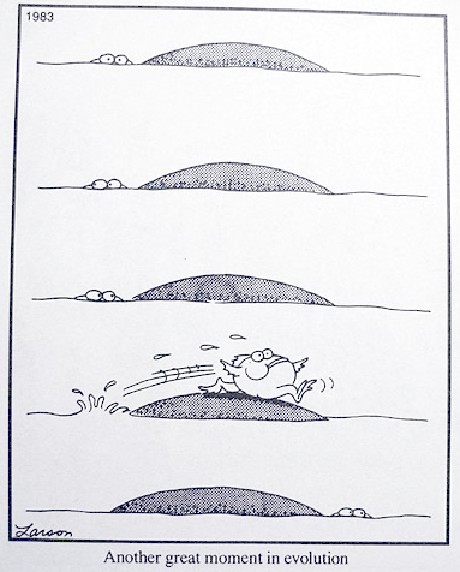
GOP.com—“Not a web site but a platform!” said Michael ‘How did I get this job?’ Steele. Well, head on over! It seems a no brainer in more ways than one to go check out the new citadel of conservatism, GOP.COM.
In an earlier post, C.I.N.O., I had reason to post Russell Kirk’s 10 Principles of Conservatism. For comparison purposes, here’s the link to the source. Ahhh, comparison to what you mutter. How about the principles Republicans believe in, live by?
(1) We’re fortunate to live in America
(2) The Republican Party believes that the United States has been blessed with a unique set of individual rights and freedoms available to all.
(3) You can be what you are, and become what you are capable of becoming.
(4) The Republican Party is inspired by the power and ingenuity of the individual to succeed through hard work, family support and self-discipline. Helping those around you is worthwhile
(5) The Republican Party believes in the value of voluntary giving and community support over taxation and forced redistribution.
Small government is a better government for the people
(6) The Republican Party, like our nation’s founders, believes that government must be limited so that it never becomes powerful enough to infringe on the rights of individuals. You know what to do with your money better than government.
(7) The Republican Party supports low taxes because individuals know best how to make their own economic and charitable choices.
Free markets keep people free.
(8) The Republican Party is supportive of logical business regulations that encourage entrepeneurs to start more businesses so more individuals can enjoy the satisfaction and fruits of self-made success.
(9) Our Armed Forces defend and protect our democracy
(10) The Republican Party is committed to preserving our national strength while working to extend peace, freedom and human rights throughout the world.
(11) The Republican Party is guided by these principles as it develops solutions to the challenges facing America.
These principles, vis a vis conservatism, are mostly puerile, in comparison to the mature articulation provided by the example of Mr. Kirk. There seem to be omissions, since there’s no talk of the founders, or about Judeo-Christian values, of abortion.
I note this and think to myself how it is often presumed by conservatives of a certain didactic bent that if a person can deploy sound rationality to the problem of governance, the person will inexorably be led by the power of reason to ‘conservative’ principles. However, I don’t see how this same procedure could lead to these particular principles.
For example, one can experience the problem in any attempt to reason through how it could be that conservatism is the natural result of deeply apprehending the ethic and philosophy of all those Christ-centered, tradition-embracing, founding fathers. After all, such a working-through is only made problematic by the bald fact of those same founders—for the most part—not being conservative, and, being instead, revolutionaries. Heck, some were Unitarians!
To travel through GOP.com was for me split between the feel of being a tourist in a strange land, and, being nominated to be a member of one of the oddest focus groups imaginable. The most startling pitch found there is directed at bringing African-Americans back into the folds of their ‘natural home,’ the party of Lincoln.
On the Republican Heroes pages, 18 such ‘American Heroes-Patriots’ are highlighted. They are:
Abraham Lincoln (1809-1865)
Frederick Douglass (1818-1895)
Pinchney Pinchblack (1837-1921)
Jose Celso Barbosa (1857-1921)
Clara Barton (1821-1912)
Ronald Reagan (1911-2004)
Joseph Rainey (1832-1887)
Octavius Catto (1839-1871)
Jackie Robinson (1919-1972)
Hiram Revels (1827-1901)
Susan B. Anthony (1820-1906)
Edward Brooke (1919- )
Dwight Eisenhower (1890-1969)
Everett Dirkson (1896-1969)
Frank Johnson (1918-1999)
Mary Terrell (1863-1954)
John Langston (1829-1897)
Ellen Foster (? – ?)
Six white guys. Four patriots born in the 20th century. No Jesse Owens! It’s hard to figure out what the criteria was, EXCEPT, the obvious and cynical criteria hitched to the GOP being the party of Lincoln—who freed the slaves—jumps out. Factoid: John F. Kennedy won 60% of the black vote in 1960; Truman 67% in 1948; Obama 96% in 2008. (See also Nancy Weiss, Farewell to the party of Lincoln: Black politics in the age of FDR, for the relevant earlier history.
Republican thought leaders have offered a variety of crude explanations of why African-Americans vote Democratic, even though the Democratic Party was the home of most white racists for almost a century after the civil war. These explanations echo the ur-standard supposition: that if only one has the chops to think it through, one would embrace the natural ‘rightness’ of the Republican cum conservative creed.
(See Francis Rice in Human Events, Why Martin Luther King was A Republican He writes there:
Today, Democrats, in pursuit of their socialist agenda, are fighting to keep blacks poor, angry and voting for Democrats.”
Let’s be good empiricists and wonder about what would be the result were we to investigate the quantification of poverty rates among African-Americans over the various Democratic and GOP administrations, starting from the post-war era. What do you guess you would find? Do you imagine increases in black poverty tracks more closely to Democrats being in power, or more closely to business cycles? How; what, do business cycles track?
Here’s Rice, again, writing in February, on the web site of the National Black Republican Association:
The euphoria over the election of Michael Steele as the head of the GOP came from the fact that he was elected as chairman of the Republican Party because of the content of his character, not the color of his skin.
His historic election makes him the rightful inheritor of the legacy of Abraham Lincoln, the Republican Party’s first president, and the realization of the dream of Dr. Martin Luther King, Jr., a Republican and our nation’s most revered civil rights leader.
It is only fitting that Steele’s election as the head of the Republican Party took place during the bicentennial of the birth of President Abraham Lincoln and the year of the assumption of power by President Barack Hussein Obama, a black liberal Democrat who falsely portends to be the inheritor of Lincoln’s Legacy and the realization of Dr. King’s Dream.
For the first time in the history of our Republic — since our founders established this nation on Judeo-Christian values anchored on a fundamental truth that all men are created equal and are endowed by their creator with the unalienable rights of life, liberty and the pursuit of happiness — the fate of our nation rests in the hands of two black men.
We are in a battle for the soul of America. Which black leader will determine the future of America? Will we follow Obama and the Democratic Party down the path of failed socialist policies that promote urban decay and generational poverty, or will we heed the call of Steele and the Republican Party to continue embracing our traditional values that have made this country great? The choice is ours.
Will we choose freedom or Uncle Sam’s Plantation?
I think it fair enough to use Rice’s wingnutty ideation as context for GOP.com’s cynical and hopeless appeal to African-American voters. The point is: the confabulation of this alternative history is not in the slightest manner reasonable, or conservative; nor does it correspond to the actual voting record and policy commitments of the Republican Party after 1964. It would take a sea-change in the GOP to re-associate itself with the ethos and radical figure of Abraham Lincoln.
Ironically, the Republican attempt to re-associate the Democrats with their past also wishes to co-opt the radical liberal principle that ‘all men are created equal.’ That this comes during an era when the Republican Party has boiled itself away to the dregs of white privilege makes the alternative universe of GOP.com a place where such hideous and cynical appeals are framed to be de rigueur.
















